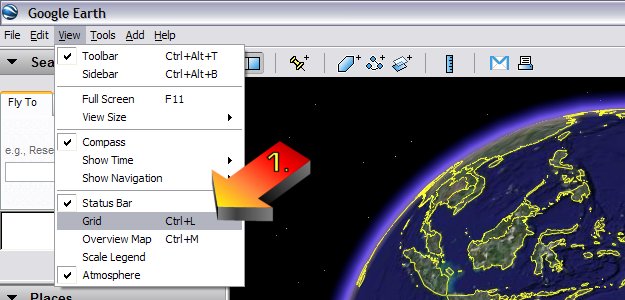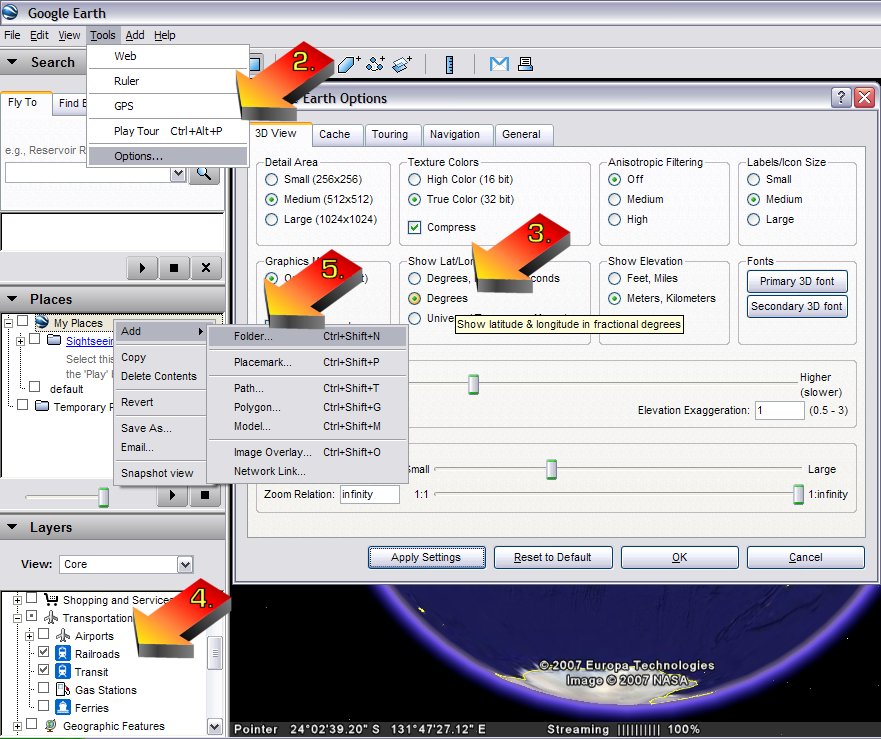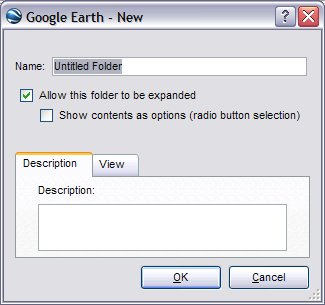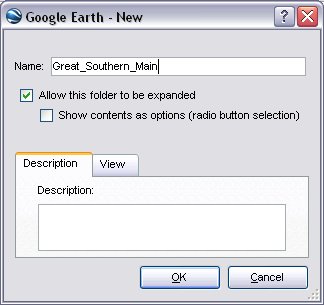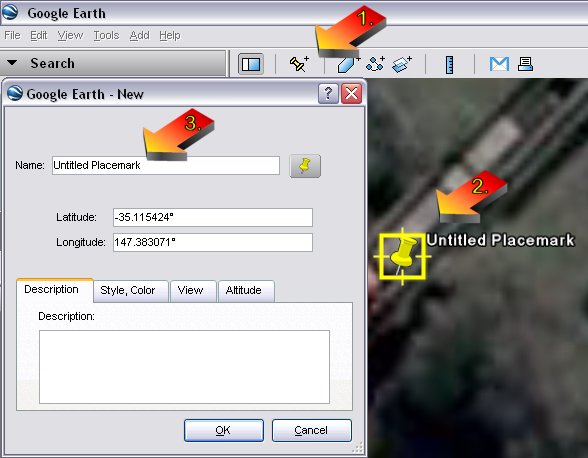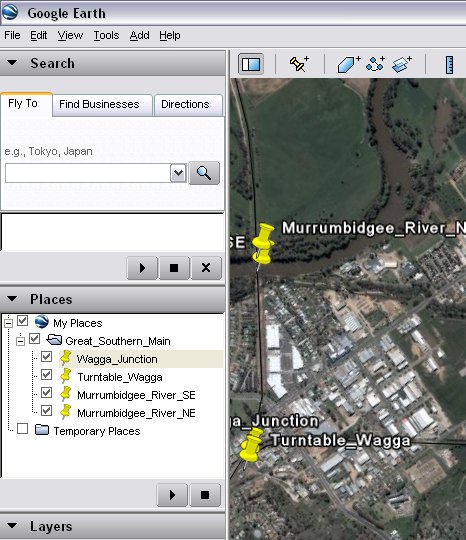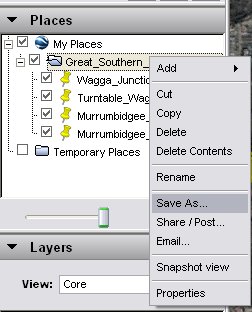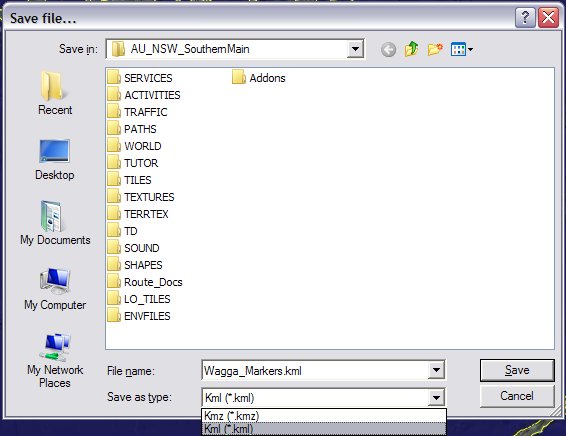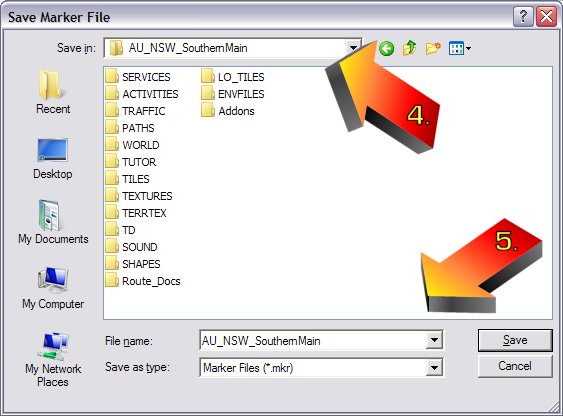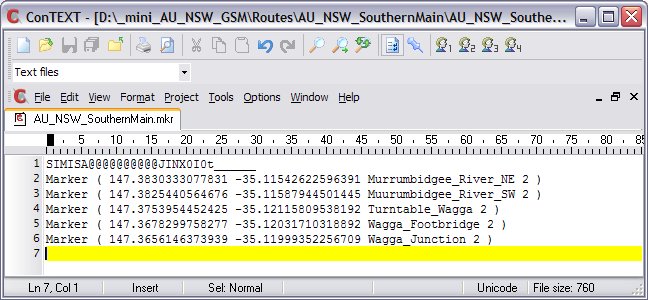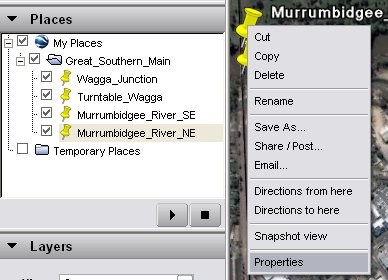Using Google Earth To Place Markers in Route Editor in MSTS
by Yuri Sos, based on work by Javier Aranda and Doug Kightley
KML to MKR conversion by Route Riter by Mike Simpson
Overview
What is Google Earth?

To quote Google themselves, "Google Earth combines the power of Google Search with satellite imagery, maps, terrain and 3D buildings to put the world's geographic information at your fingertips. But Google Earth is much more than just a mapping software. It's a tool for viewing, creating and sharing location-specific information which can be explored in an interactive and visually intuitive interface."


